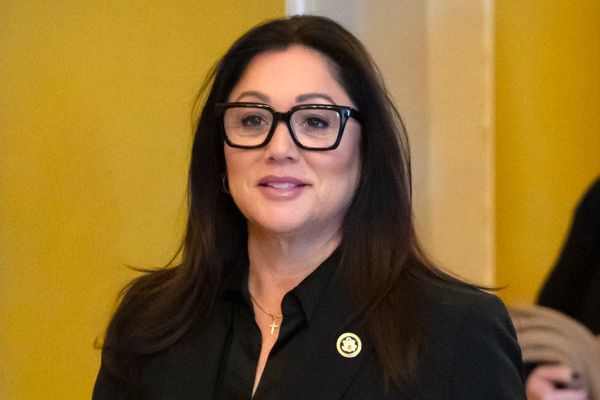
At a cursory glance, Kosmos Energy (KOS) is in a bit of a pickle. Pulling up its 52-week chart, investors can see that KOS stock incurred a loss of nearly 15%. In addition, the hydrocarbon sector has not exactly been enticing recently. Even though major oil-producing nations agreed to production cuts, crude has been basically flat in the past year.
On the surface, these and other factors don’t particularly bode well for KOS stock. After all, Kosmos is an upstream specialist in the energy value chain; that is, the business model centers around the exploration, development and production of hydrocarbons. If the price of crude is flat to declining, that presents a huge obstacle given that the upstream industry is capital intensive.
Still, that’s not the only picture with KOS stock. Last week, I brought to Barchart readers the speculative thesis of Rent the Runway (RENT). RENT is stuck in an even worse pickle than Kosmos – much, much worse. At time of writing, shares of the fashion subscription service suffered a loss of almost 83%. One could make the argument that it’s on life support.
Yet in the week ending Jan. 12, RENT gained nearly 53%. And it’s quite possible that shares could jump through Friday, Jan. 19. So, how did I anticipate this development?
To be upfront, no one has a crystal ball. However, we all have access to information. On Jan. 8, Barchart’s unusual volume indicator pointed to increased activity for the Jan 19 ’24 1.00 Call. Further, an institutional trader (or traders) sold 7,944 contracts of said call option. Essentially, the bears egged on the bulls to take the opposite side of the bet.
Well, they did just that. Combined with relatively high short interest (in the open market), that was too much of an attractive “spread” (in the sports betting context) for gamblers to ignore. And I believe a similar situation awaits KOS stock.
Wall Street’s Bookies Try Again with KOS Stock
On Jan. 11, Fintel’s options flow screener recorded the sale of 4,000 contracts of the Feb 16 ’24 7.00 Call, collecting a premium of $60,000. For those unaccustomed to options market lexicon, Feb. 16, 2024 represents the expiration date, basically a month from now. The “7.00” metric refers to the strike price. Finally, the premium is the total price that all buyers on Jan. 11 paid to the call seller (writer).
It’s important to get this foundation down because call options give the holder the right (but not the obligation) to buy the underlying security at the listed strike price; that is, buy 100 shares of KOS stock per each option contract at $7. On the other hand, the call writer has the obligation (but not the right) to sell the underlying security at the strike upon exercise.
Now, when it comes to engaging near-expiry call options, participants effectively catalyze price discovery. For instance, a call writer could choose to sell KOS stock call options at a ridiculously high price – let’s say $100. By doing this, there’s very little chance that buying the call would be profitable. Therefore, it’s minimal risk.
However, no one would likely buy said call option, just like no one would take a straight-up bet on the worst team in a sports league to beat the best team. So, for call writers, the strike price needs to be enticingly low enough for bullish contrarians to bite. Similarly, in sports betting, the line (or spread) needs to favor the underdog.
Maybe there’s almost zero chance that in a football game, the underdog will overcome the perennial favorite. However, will the favored team win by four touchdowns? Maybe not, and that’s where the contrarianism comes into play.
On Friday, KOS stock closed at $6.50. The strike price is at $7. That’s less than 8%, which is a “do-able” target given how much the stock moves (considering its 60-month beta of 2.46).
An Underlying Obligation
With all sold options, a defined risk exists. Regarding calls, the risk is the difference between the value of the exercised contracts at the open market price and the (lower) strike price, as well as accounting for the premium collected. However, call options come with an undefined risk if the position is entered into uncovered or naked.
Should the call writer sell the contracts without owning the underlying security, then upon exercise, the writer must buy the security at the higher open market price, only to sell it to the exercising call holder at the lower strike price. And there’s no way to shirk this obligation because that’s what it is – a contractual obligation.
Further, if the sold calls become really blown up – that is, the underlying security rises higher and higher – it poses a huge dilemma. Should you wait it out and hope for the best or bite the bullet now before the stock continues to soar to fresh peaks, thus expanding the loss?
The potentially uncapped nature of sold calls makes this a dangerous proposition for traders selling such uncovered derivatives. But that also makes the wager incredibly enticing for the contrarian bulls.
On the date of publication, Josh Enomoto did not have (either directly or indirectly) positions in any of the securities mentioned in this article. All information and data in this article is solely for informational purposes. For more information please view the Barchart Disclosure Policy here.






